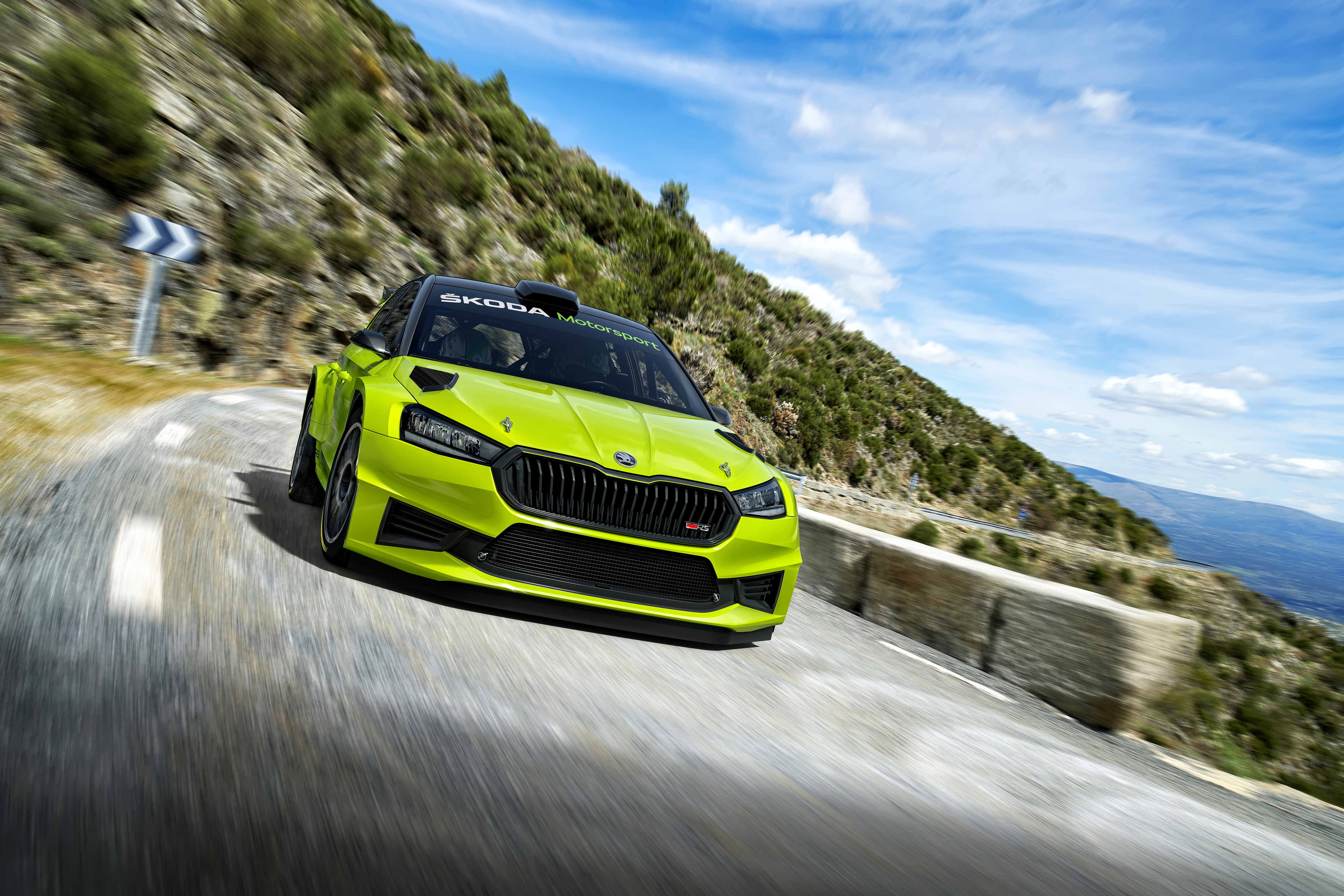A solid foundation
The fourth-generation ŠKODA FABIA is built on Volkswagen Group’s MQB-A0 platform, which has led to a number of changes to both the car’s proportions and its technical design. ŠKODA Motorsport engineers have used these changes to their advantage and tried to make the most of the new features during development.
The design of the new car, for example, is impressive, as it brings the rally car as close as possible to the production car. The ŠKODA FABIA RS Rally2 takes the regular version’s emotive design and adds dramatic racing features such as wider bumpers, air intake and vent holes and a new rear wing. To celebrate the closer link with series production, the car was unveiled in a new colour scheme, with the traditional green shade replaced by the more vibrant Green Mamba for ŠKODA Motorsport that ŠKODA customers can order for their mass-produced ŠKODA OCTAVIA RS and ENYAQ COUPÉ RS iV.

The refined aerodynamics of the production version formed a great basis for the motorsport engineers to work on. It gave them more leeway for fine-tuning the racing car’s drag more, resulting in a significant increase in downforce compared to the FABIA Rally2 evo. This downforce is almost double, with the resulting improvement in the car’s grip and therefore its cornering speed.
The car’s already top-notch safety has also taken a big step forward. Of course, the FABIA RS Rally2 doesn’t use any of the safety assistance systems or the extensive airbag suite we know from the production model. But it does rely on the extremely rigid body structure, which has made it possible to further enhance the level of crew protection in the event of an accident. Stiff bodywork alone is not enough at the speeds that the competition specials reach, though, so there is the obligatory roll cage that is welded firmly onto the car’s platform even before the sides of the body are assembled onto the car. This ensures the highest possible quality of the welds and increases safety. This frame consists of a total of 35.8 metres of tubing.

Compared to the previous generation, the new production ŠKODA FABIA has also grown a little in size without adversely affecting the weight of the car. ŠKODA Motorsport engineers have made the most of this too. The new proportions give them more options in terms of weight distribution. And this, combined with the increase in the car’s wheelbase and the superior aerodynamics and more precise chassis adjustment options (thanks to the stiffer bodywork), results in improved stability. There is also more space in the engine compartment, which has enabled beneficial changes in the powertrain area as well.






















